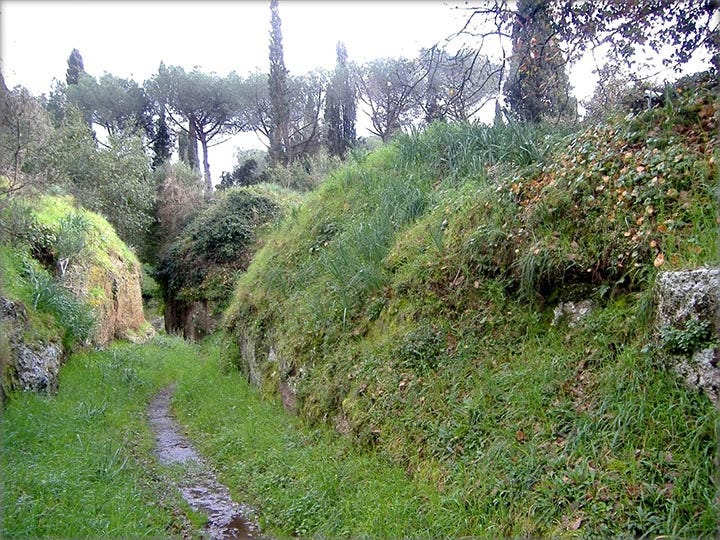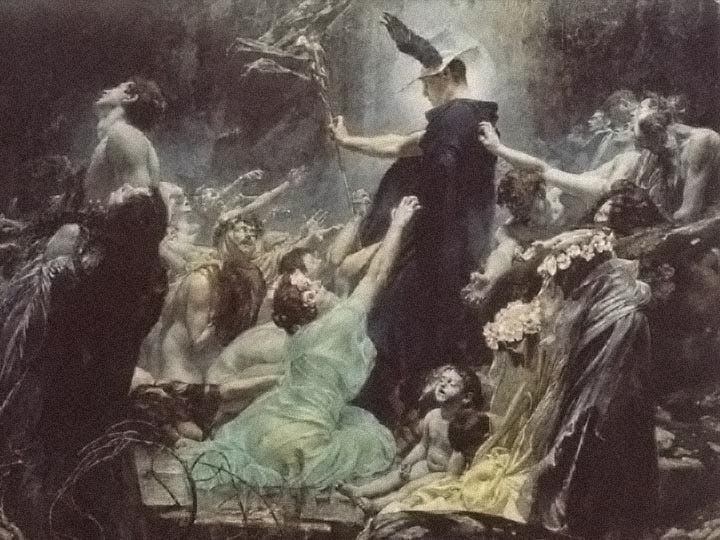Ceremony
You don’t have to be in the occult world for long before you encounter the idea of ceremony. Ceremony is universal to almost every form of spirituality, and many non-spiritual aspects of our lives. For some, the theater of the affair is attractive, but for others, it’s just a bunch of memorization and confusing stage directions. The question every practitioner must answer for themselves is this: do I lean in, or do I scrap the whole affair?
Let’s begin with the word itself. A words are gateways for ideas, and so they have a lot of information they need to pack into a handful of syllables. Because of this, there is a lot we can glean about an idea by just looking at the etymology of the word. Saying the word ceremony aloud summons visions of dusty old men in robes solemnly pacing around a circle, mumbling latin phrases and gesturing mysteriously. It sounds so aloof and fancy, doesn’t it? It’s not entirely wrong, but only in the sense that it doesn’t go below the surface. Let’s dig further.
Ceremony entered the Middle English language via Old French around the 14th century, but tracing it back further we get caerimonia, from Latin.
Late 14c., cerymonye, "a religious observance, a solemn rite," from Old French ceremonie and directly from Medieval Latin ceremonia, from Latin caerimonia "holiness, sacredness; awe; reverent rite, sacred ceremony," an obscure word, possibly of Etruscan origin, or a reference to the ancient rites performed by the Etruscan pontiffs at Caere, near Rome.
We see that the word itself designates something holy, or sacred. Interestingly, the origin of the word comes not from an action, but from a place. Caere was an Etruscan town in the Italian peninsula that reached its height around 600 BCE. With a population of between 25,000-40,000 people, it was a fairly large city at the time. According to ancient sources, Caere was originally founded by the Pelasgians. The Pelasgians were, according to Herodotus, a pre-Greek people who themselves came to dwell in the Greek islands from elsewhere. Herodotus wrote in his Histories the Pelasgians brought with them the practice of creating herma and the chthonic mystery cult of Cabeiri. Caere was known for it’s extensive necropolis, perhaps pointing at a through line from early pre-Greek Pelasgian chthonic worship to a later society with extensive death-centered practices.
This detour serves to illustrate something fundamental about the idea of ceremony. The early herma marked the boundaries of place and designated the transition from one space to another. They were often found along roadsides and at crossroads. A necropolis enshrines the transition from life to death, creating a space that mirrors the living world for the dead. Ceremony marks out the transition from mundane to sacred, in both time and space. Ceremonial performances of any type serve to mark the transition from one state to another. A cup of coffee carefully crafted each morning designates the transition from sleep into the state of being awake and ready for the day. Performing the lesser banishing ritual of the pentagram serves to transition the performer from a state of mundanity into a state of sacredness.
It’s no surprise then, that Hermes is the de facto god of magick in the western esoteric tradition. All magick, in a way, seeks to put to work the idea of transition. The work of alchemy illustrates this in the most straight forward way, but all types of magick do the same to some degree. Let’s not forget that Hermes was also a chthonic god of the underworld, ferrying souls from life to death. To change something, the old thing must die to give way to the new one. As practitioners of the occult arts, we serve ourselves well to learn to successfully navigate transitions in all their forms. One of the ways our minds do this best is through symbols.
An example. I wish to get better at card reading, and decide to enchant for that outcome. I need to transition from my current state into one where I am an expert diviner. I mark the transition in symbol, a ceremony I construct for the purpose. It really doesn’t matter what the ceremony is. I could chose to make it extremely elaborate. I may call down god forms, or recite a poem on the day and hour of Mercury. I may simply visualize myself as a venerated old fortuneteller, having achieved my goal of perfecting my craft long ago. Like I said, it doesn’t matter. The thing that does matter is that I have marked out a transition from one state to another, and have powered it through magical means. I have found the road and set off down it.
Speaking of cards, I asked them this: what is the quintessence of ceremony? They answered: King of clubs, five of clubs, eight of clubs. Clubs symbolize work, they are the big sticks we attack our problems with. Thus, the quintessence of ceremony is to rule over the work of aligning the above with the below. A king with a big stick is a magician with a wand. Fives symbolize the body, material matters. The eight represents the work of the mind. How will you preside over your own transitions?
Praxis
Hermes is god of transitions, and so he is the perfect one to call on before any ritual or ceremony. As an underworld god, he can help us navigate the way forward on any journey. On the day and hour of Mercury, recite the orphic hymn to chthonic Hermes.
Hymn 57: Chthonic Hermes
incense: storaxYou dwell on the road all must take,
the road of no return, by the Kokytos,
you guide the souls
of mortals to the nether gloom.
Hermes, offspring of Dionysos
who reveals in the dance,
and of Aphrodites, the Paphian maiden
of the fluttering eyelids,
you haunt the sacred house of Persephone
as guide throughout the earth of ill-fated souls,
the souls you bring to their destined harbor
when their time has come;
you charm them with your sacred wand,
you give them sleep
from which you rouse them again.
It is you indeed
that Persephone gave the high office
throughout broad Tartaros
to lead the way
for the everlasting souls of men.
O blessed one, grant a good end
for the labors of the initiates.from the Apostolos Athanassakis and Benjamin Wolkow translation
If you have it, be sure to light some storax, but any incense will do. Before the hymn, take a moment to feel with your whole body that you are transitioning into a new state, be it one of sacredness or towards a personal goal. Visualize the boundary between where you are, and where you want to be. Visualize crossing it. Afterwards, enter into meditative contemplation. Take note of any synchronicities, dreams or happenings in the hours and days afterwards.






